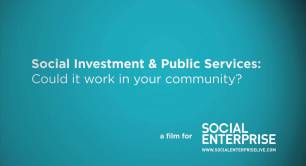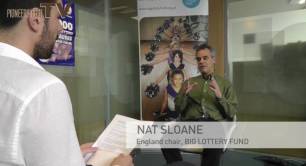Putting the social investment analyst in the hot seat
Dee O’Sullivan-Winks is social investment project manager and analyst at VSO International, a leading development NGO that works through volunteers. This means it's crucial that she stays on the pulse of the latest trends and activities in the social investment space.
Ian Allsop caught up with her to find out how charities are reacting to the opportunity for social investment, and what donors expect when social investment is thrown into the mix.
Dee O’Sullivan-Winks is social investment project manager and analyst at VSO International, a leading development NGO that works through volunteers. On a day-to-day basis this primarily involves researching and keeping up-to-date with an embryonic and ever-changing sector. She says that being able to quickly process, simplify, summarise and disseminate the range of approaches is a crucial part of her role. “It is central to being most effective in shaping internal thinking, inputting into organisation-wide funding initiatives and driving strategies. In this current climate where social investment is the buzz word of the moment and new initiatives seem to pop up by the day, this can be a challenge in itself.”
After a career in investment management she says it was a sense of disconnect that prompted a search for a new challenge. She and her husband volunteered in Uganda with a local NGO running a number of schools and community outreach programmes. “The experience gave me exposure to the innumerable challenges faced by those most affected by global poverty on a daily basis, but also the far-reaching potential their innovation and hope for a better future has in shaping development goals. Being able to leverage my investment background in order to help VSO explore and navigate the social investment market is a dream job.”
The choice of routes into the market are vast and can be overwhelming, while the lack of standardised terminology and methodology can be confusing.
She identifies a number of challenges for charities involved in social investment. “Given the sprawling landscape of social investment initiatives out there right now, I think the most obvious one is to know exactly how and when to engage in this growing sector. The lure of large, untapped pots of potential funding is tempting for any charity especially in the continued environment of funding cut backs and reprioritisation. How much of a priority should it be to foray into this new, less understood funding arena when we are constantly challenged to find innovative and more cost effective means of delivering everyday charitable objectives? The choice of routes into the market are vast and can be overwhelming, while the lack of standardised terminology and methodology can be confusing.”
She says that the perceived risks involved in entering a market that still has much to prove in terms of sustainable impact are great. “Charities are naturally risk averse and it’s a challenge to gain a level of comfort with entering what is inherently a higher risk arena. In the case of larger international charities, with numerous moving parts and differing operational priorities throughout the world, this element of risk can be compounded.”
Encouraging centralised and formalised knowledge share will help to streamline the landscape and provide clearer guidance on opportunities and risks for new market entrants.
Sharing knowledge is a key part of her external-facing role and she is fortunate that by its very nature of shared goals and objectives the non-profit sector is full of networks and forums where she can swap ideas and troubleshoot challenging issues. O’Sullivan-Winks is closely involved with the Young Charity Professionals Group (YCPG). Set up by Stone King, Gerald Eve, Sarasin and PwC, YCPG is an informal forum for young professionals and future sector leaders working in and around charities and social enterprises to share knowledge, to discuss current issues and build contacts and relationships. “Being able to simply chat to peers in a relaxed environment and learn about exciting projects they’re working on is invaluable and provides that broader perspective which I think is so important in my role and in building any career.”
Looking ahead O’Sullivan-Winks says that the issue of de-risking the social investment market is very important. “Encouraging centralised and formalised knowledge share will help to streamline the landscape and provide clearer guidance on opportunities and risks for new market entrants. There is already a wealth of lessons learned from practitioners in this field, both inside and outside the charity sector. The challenge, however, is accessing and digesting this cross-sector evaluation and learning, while the growth of the young social investment sector continues apace. Some charitable organisations may prefer to sit back and observe the market and wait for those lessons to be embedded before partaking.”
She also says that the cost factor can be off-putting for charities as the need to justify expenditure to donors and supporters will always be an organisational priority and obligation. Likewise, the cost of sourcing and completing due diligence of investment opportunities is costly for investors, meaning social investment appeals to a niche investor market with the resources to absorb high costs and greater risks.
She concludes by saying that while there is a lot of information and discussion that supports changing perspectives within the investment market there is not the same depth of resources available to assist charities in clarifying exactly where they or their social investment initiatives would sit in a risk/return spectrum. This can hamper the effective communication with donors and supporters about the differentiation between social investment and philanthropic giving. “As a donor I would want to know why my non-repayable grant is valued by charities when there is a possibility that I could, in addition to providing capital, make a substantial return through social investment. As the social investment market grows, the international development sector may find it needs to develop greater clarity in articulating how pursuing social investment strategies is best leveraging the impact of donor funding.”
Photo credit: Glassview, Flickr



